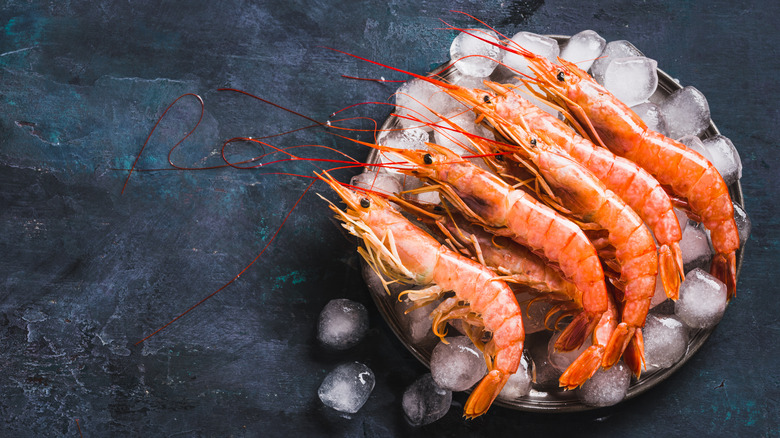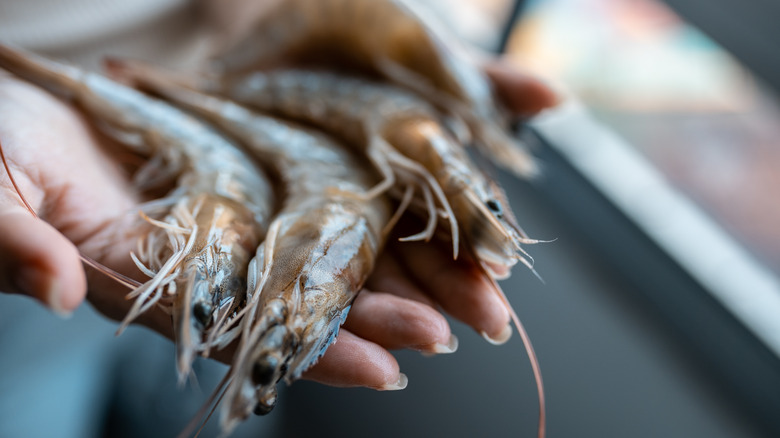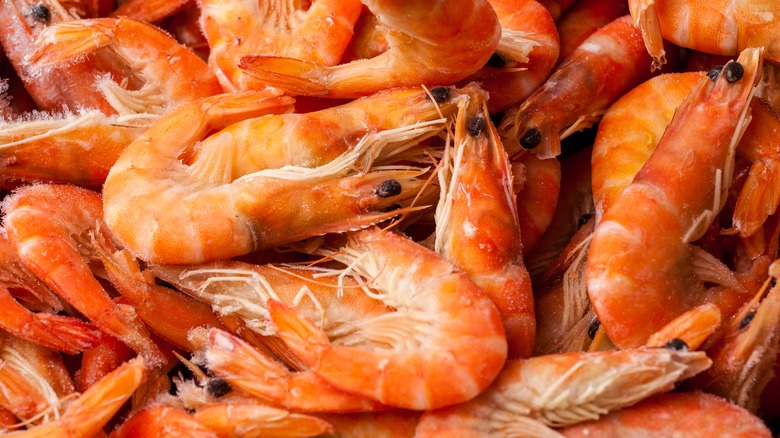The Difference Between Shrimp And Prawns, Other Than Size
From perfectly seasoned shrimp cocktail to an all-star fritto misto, there is no shortage of delicious ways to eat shrimp and prawns. However, these two seafood favorites are not one and the same. This belief often causes culinary confusion, and may even lead to contentious conversations with your local fishmonger. That's why you should learn the difference between one and the other.
You might know that prawns are larger than shrimp, but this rule isn't the end-all be-all. Firstly, the terms "shrimp" and "prawns" don't conform to an official standard. While the two crustaceans are considered to be different, there is no scientific taxonomic group for either term, meaning the names can be used rather loosely. While larger species are usually called prawns and smaller ones are usually called shrimp, not all countries — or individual seafood shops, for that matter — use the same classification system.
Now, you may doubt that shrimp and prawns are actually different after all, but don't be fooled. The terms may not have rigid definitions, but they're used semi-consistently to describe two types of crustaceans that have unique characteristics, and paying attention can help you determine what you're really buying. Instead of relying on size to differentiate shrimp from prawns, consider the animal's structure, shape, number of claws, and the habitat where they were fished from. You'll find that species usually called shrimp are, in fact, quite different from prawns.
Look at shell-on shrimp and prawns to spot the difference
Prawns and shrimp definitely look similar, and their visual differences are nearly erased once they're de-shelled. If you're curious about sampling both of these animals for yourself — or perhaps your recipe calls for prawns, and you really want to be faithful — you'll need to look for crustaceans with their shells intact. This makes it possible to properly observe the gills and shape of the animal.
Shrimp belong to the decapod sub-order Pleocyemata, and their gills are described as "platelike," meaning they're flat. Shrimp also have only one set of claws and more rounded bodies, as their tails curve inward more dramatically. Prawns, on the other hand, are from the decapod sub-order Dendrobranchiata, and have "branching" gills that are not flat and extend from their bodies. They also have multiple sets of claws and more subtly-rounded bodies.
It may be difficult to discern these characteristics with the naked eye as you shop at the store, so checking whether your crustaceans come from saltwater or freshwater can help you out. Most species of shrimp sold commercially come from saltwater habitats, while prawns are most likely to be from freshwater. With all this knowledge combined, you'll be able to pick out the seafood of your choice.
Do shrimp and prawns taste different?
We now know the general differences between shrimp and prawns, but one underrated difference is that prawns are often perceived as fancier or superior. This is likely due to their larger size, and the fact that they're more elusive than shrimp and often cost more. However, there's not a huge difference between prawns and shrimp in terms of flavor, texture, or nutrition once they're cooked. While you may be looking for a specific size or shape for the particular dish you're making, a rose by any other name really does taste as sweet, in the case of these two delicious crustaceans.
There's nothing wrong with seeking out prawns in a world full of shrimp, if you're so inclined. In truth, though, your attention should be used to find the most high-quality and cost-effective seafood you can. Fresh shrimp will always be better than lackluster prawns, even if shrimp will look a bit smaller on your plate. Going out of your way to splurge on fancy ingredients should be reserved for products like cheese and wine, many of which have stringent standards and definitions for quality — something you won't really get by relying on the labels of shrimp or prawns.



